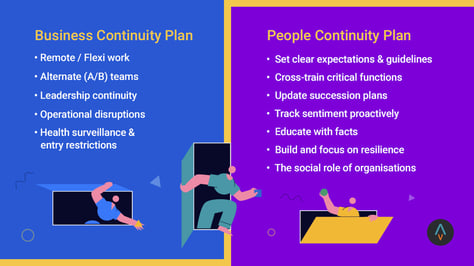
Su-Yen Wong is an internationally recognised thought leader on strategy, organisation development and the future of work, blending 25 years of experience in technology, business and human capital across Asia Pacific and North America.
Su-Yen is also a professional keynote speaker and serves on boards of several public, private, membership, and not-for-profit organisations.
We're at a stage where organisations are at a turning point - some leaders believe that the remote work imposed through the circuit-breaker period is unsustainable, while others have adapted and thrived to working in this environment. There is a school of thought that believes that the longer employees remain in this circuit-breaker period, the more we adapt and overcome our own situations.
Beyond the necessary safeguards companies need to build to ensure business continuity and health, companies should respond by assessing the other variables that are needed for a successful business. One important aspect is consumer behaviour, and another aspect is making inefficient business practices redundant. The organisational construct has never been better to strip down, says Su-Yen, and this could be through remote working, or it could be through other means such as flexibility for other matters.
Businesses should look towards finding ways to ease the balancing act many employees face in managing the different responsibilities in their lives, which can be a demonstration of not only compassion, but a way to engage and empower employees to be at their most productive.

Focus on culture, purpose and objectives for your organisation.
As human resource teams are trying the achieve the purpose of their organisations, they should rethink the mechanisms they choose to achieve them.
Employee engagement initiatives need to be translated for the remote realities of today, and the same goes for company culture. Human resource teams also need to be the bridge between efforts to engage these employees with the performance and business results expected out of a more engaged workforce, be it remote or at the office. In that sense, HR doesn't shift its primary focus too much from their original goals.

While a BCP is focused on bringing operational processes set in place, a People Continuity Plan focuses on developing an environment that is supportive of your employee's emotional health, as well as developing procedures to manage critical business functions from
Here are some resources for building psychological resilience for your teams, developing your people strategy and introducing succession planning for your teams.

 .
. 
Copyright © 2025 EngageRocket Pte Ltd. All rights reserved unless otherwise stated.